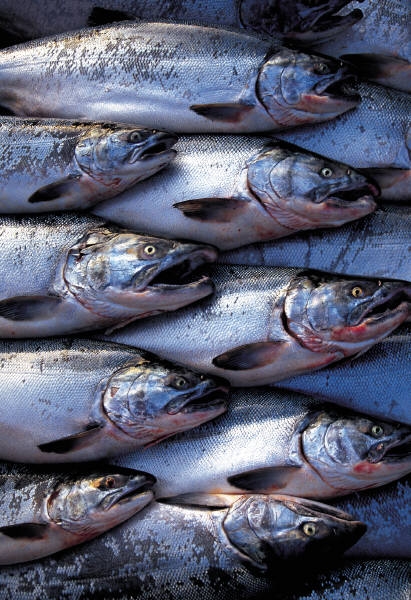The word protein comes from the Greek “prota” meaning “of primary importance.” Proteins are organic compounds composed of amino acids. Amino acids bind together to form proteins that are associated with every process of your body’s cells.
Many proteins are enzymes involved in your body’s chemical activity. Proteins are vital to metabolism, to cell structure and to mechanical function. They form the scaffolding that maintains cell shape, and are used as building blocks to all lean tissues in your body. Hair, skin, muscle tissue, and your internal organs are all constructed from protein. Protein is also utilized by the immune system to protect the body.
Your body cannot create all the amino acids that is requires, which means that you must eat the necessary protein. Some food sources contain relative amounts of all essential amino acids. Eggs, dairy, fish, beef and other meats, turkey, and chicken contain some of all the essential amino acids.
The body takes amino acids and mixes and matches them in combinations to form required proteins. If one amino acid is present but another required amino acid is not, the desired protein will not be created. Think of amino acids as letters in an alphabet soup. If you want to spell the word ‘cat’, you require three letters. If one letter is absent, you can’t spell the word. Likewise, if one amino acid is not available that is required to construct a given protein, that protein will not be built.
This is where things get tricky if you are a vegetarian. Many non-meat foods contain some essential amino acids and lack others. Vegetarians must learn to mix and match foods so the body can create the complete proteins it needs. Pita and split pea soup, chick peas and hummus, lentils and rice, brown rice and black beans, legumes and grains, corn and red beans, and tofu and sesame seeds.
If you consume complimentary vegetarian sources of protein within a reasonable time frame- about a day- your body can create needed proteins. If necessary amino acids are lacking however, the body goes to its most readily available protein source- muscle tissue. The body will break down muscle tissue to get what it needs. If your goal is weight loss, you don’t want your body cannibalizing its own muscle tissue as this actually depresses metabolism, making fat loss more difficult.
Determining Your Protein Requirement
Two factors dictate protein needs. First is the amount of lean tissue in your body that protein will sustain. Lean tissue is your body weight minus body fat. A 300 pound football player with ten percent body fat has a dramatically different protein need than a 300 pound person with 50 percent body fat.
The second factor dictating protein need is how much your body metabolizes. This will be largely effected by your activity level. Active individuals need more protein than inactive individuals. Also those with more muscle tissue require more protein to sustain muscle.
Your body can only metabolize a certain amount of protein in one sitting. If you eat more protein than your body requires in a given time frame, part of that protein can be converted to carbohydrate. Excess protein eaten beyond what your body requires or can use within that time frame will be converted to fat.
The amount of protein that can be metabolized will vary from person to person. Larger, more muscular individuals will likely metabolize more protein per meal than smaller individuals. Eating between 20 and 30 grams of protein per meal is about right, depending on your lean body mass.
During initial phases of strength training, you will probably require more protein than later phases.
As you are probably noticing, your protein intake is a balancing act. You want to eat what you need without going over-board.
Keys to balancing protein intake:
- Eat small portions of protein that your body can put to use in each meal. Avoid excessive amounts of protein in those meals.
- Spread those meals out over the course of each day, eating some protein in each meal you eat every three to three and a half hours. This will be about five meals per day.
- Focus on lean meats that contain a wide spectrum of essential amino acids.
- If you are a vegetarian, especially if you are active, learn how to eat complimentary food sources to get all the essential amino acids.
Protein Meal Replacements & Bars
There is a plethora of protein/nutrition bars available. Some are high quality. Most are not.
One of the latest fads is the “low carb bar” sweetened with sugar alcohol in which the term “net carbs” is used. The term “net carbs” is used to refer to the amount of carbohydrate that will have a significant impact on blood sugar levels. If a bar has 30 grams of carbohydrate with a total of four grams from fiber and 22 grams of glycerine or sugar alcohol, the bar might be said to have four grams of “net carbs”. Subtract the four grams of fiber and 22 grams of sugar alcohol from 30 and you have four net carbs. While the fiber content of the bar has a minimal impact on blood sugar levels in your body, the sugar alcohol is a different story. Sugar alcohols act like sugar in the body, so really the “net carbs” marketing is deceptive.
Companies can use the term “net carbs” to market their products because sugar alcohols have not been categorized as sugar by the FDA. Some common sugar alcohols include Isomalt, Maltitol, and Maltitol Syrup.
Remember, if you want to lose fat, be conscious of the sugars you are eating, including those you might consume by way of food bars.
There are a few bars on the market made from whole foods that can be a quick and convenient supplement to your regular diet. One fantastic product made from organic fruits and vegetables is ReBar, available at www.healthcocanada.com or at your local health food store. These bars don’t contain added protein, but are a great way to get healthy fruits and vegetables in your diet. One bar is like eating 9 servings of veggies and fruits. Another great Rebar product is their Seeds & Greens bar which contains a small amount of protein from the seeds in the bar.
The Raw Revolution Organic Live Food Bars are another quality whole food product (see www.rawindulgence.com for more info). Raw revolution bars come in these flavors- Chocolate & Cashew, Raspberry & Chocolate, Coconut & Agave Nectar, and Spirulina & Cashew.
Greens Plus is another tasty organic food bar (www.greensplus.com). They have protein bars in Natural Peanut Butter and Peanut Butter/Chocolate flavors. They also have energy bars in Natural and Chocolate flavors. I particularly like the Chocolate energy bar. Many health food stores sell Greens Plus.
Whey protein has a high biological value (it contains all essential amino acids required by your body). “Jay Robb” whey protein is a high quality product. “Natural Factors” is also an excellent product. Both are available at Whole Foods. Most products on the market, especially those in large tubs are generally low quality: they contain artificial sweeteners such as Aspartame, Acesulfame Potassium (K), and Sucralose, and the whey is poor quality.
Conclusion
Use only protein sources that will strengthen and build your body, and avoid poor quality supplemental protein products.
Supply your body with a steady stream of protein throughout the day in smaller, usable amounts.
Ensure that you are getting adequate protein to sustain lean body mass (or to increase muscle tone and promote weight loss if that is your goal).
Remember, it is essential to provide the right building blocks to maintain good health. Eating poor quality protein and other foods is precisely like using termite infested wood to build your home. Using high quality materials will help preserve life-long quality of health.









